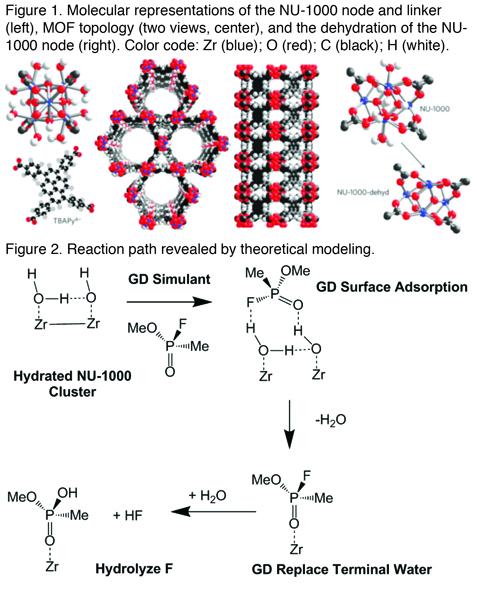

Main navigation | Main content
Recent uses of chemical weapons agents (CWAs) in global conflict zones, especially the conflict and ensuing chemical disarmament in Syria, have highlighted the need to protect civilians and soldiers from these toxic materials. One major impediment to CWA disarmament is that destruction of stockpiles can only be undertaken within an extremely limited set of conditions, many of which are not suited to field work.
A team of researchers from Northwestern University and the University of Minnesota, working together as part of the Nanoporous Materials Genome Center, have made a significant breakthrough with a new material that is robust and effective at destroying toxic nerve agents, as recently reported in Nature Materials. The material, is a zirconium-based metal organic framework (MOF), called NU-1000; collaborators at the U.S. Army Edgewood Chemical Biological Center have shown that NU-1000 catalytically detoxifies the deadly nerve agent Soman (GD) within a matter of minutes. NU-1000 is robust, can be prepared in large quantities, and is catalytically active under many environmental conditions, making it ideal properties for defense applications.
Theoretical exploration of the reaction pathway by Will Isley, a graduate student in Professor Christopher Cramer's group, suggests that open zirconium ion sites are responsible for the catalytic activity, and ongoing theoretical work should prove useful for further optimizing the activity of related materials.
